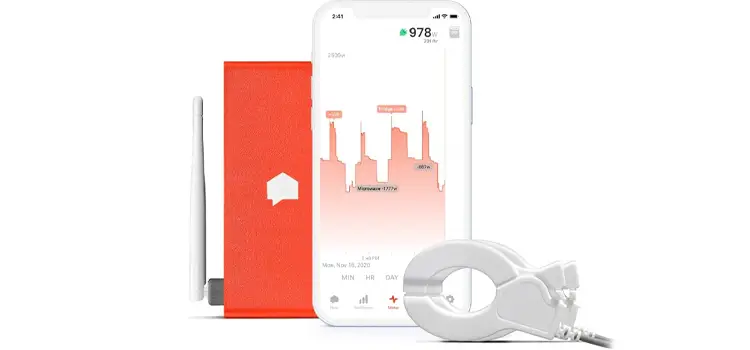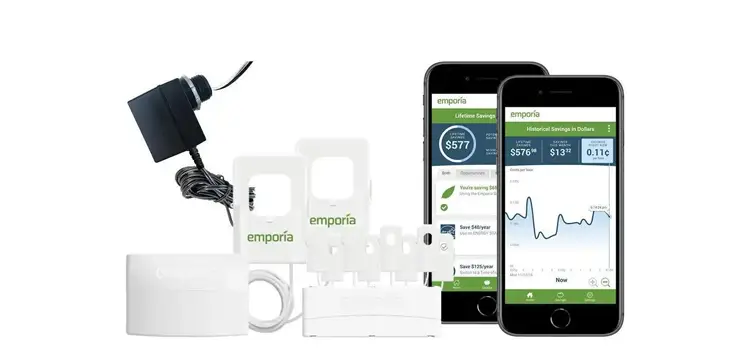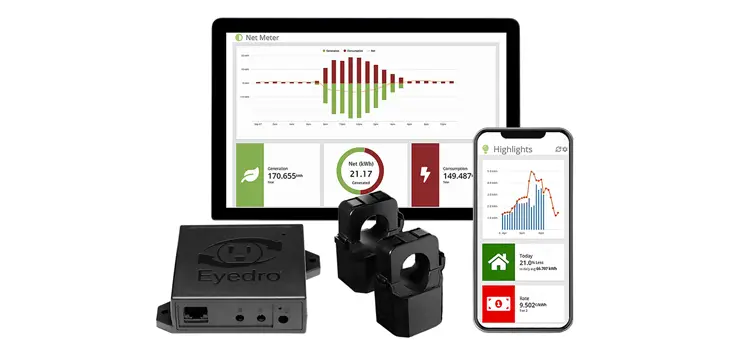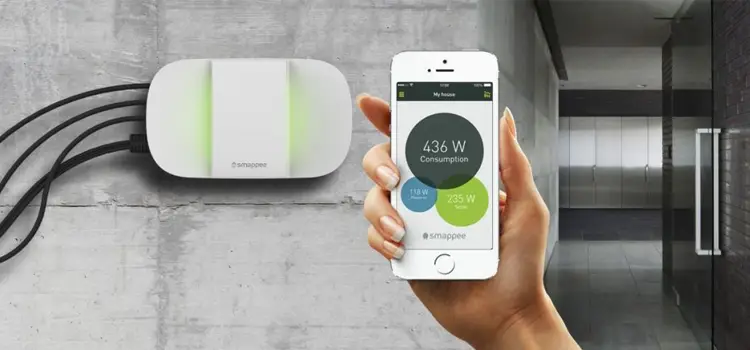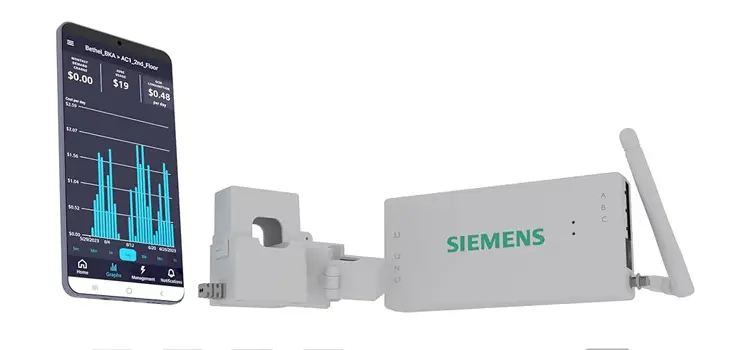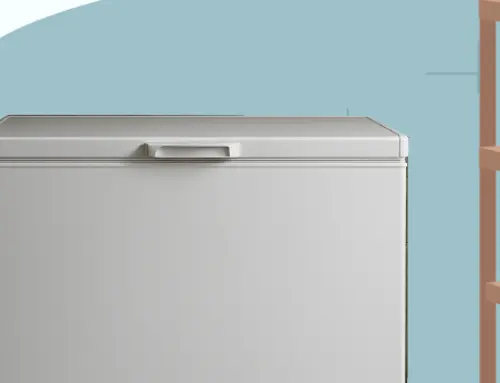Best Home Energy Monitoring Systems for Midwesterners 2025
by Tyler Castle
10.6 min read
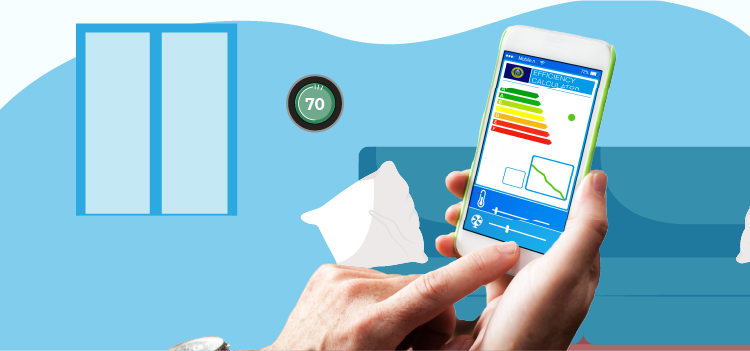
In today’s world, where energy efficiency and cost savings are more crucial than ever, having a reliable home energy monitoring system can be a game-changer. These systems offer homeowners a comprehensive view of their energy consumption, helping them make informed decisions about their energy usage.
However, where should one begin to identify the ideal model for their residence? Well right here, of course! We’ll cover everything from the advantages of smart home energy monitors to how to choose the best system for your home.
What is a smart home energy monitor?
A smart home energy monitor is designed to monitor home energy usage. Unlike traditional energy meters, which only provide a monthly total of your energy consumption, smart monitors offer detailed insights into how and when energy is being used throughout your home.
Usually connected by an app, homeowners can view their energy usage in real-time allowing users to identify which devices consume the most energy and where they can make adjustments to their usage patterns.
How does it work?
The installation process only takes 30 minutes to complete and should be done by a licensed electrician. Connected to the main electrical panel, most monitors use clamps or sensors around the main electrical panel to measure your electricity usage. Your electricity panel also connects various appliances throughout your home that your home energy monitor can measure too.
Important features of a home energy monitor
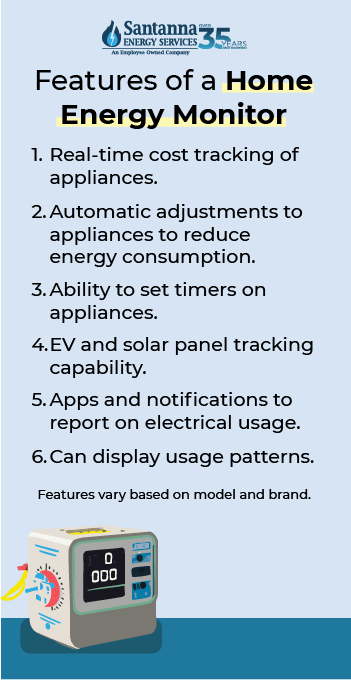
If you’re not sure if using a home energy monitoring system is right for you, allow us to shed some light on the best advantages:
Real-time cost tracking: A smart home energy monitor can track your energy costs in real-time. This feature allows you to see exactly how much money you’re spending on electricity, on any appliance, at any given moment.
Automatic adjustments: Some advanced smart home energy monitors are equipped with features that can automatically adjust appliances like smart plugs. This function allows you to set timers, schedules, and more all from one device.
Apps and notifications: Most energy monitors connect to apps that store your energy information. Some monitors even allow you to receive push notifications directly to your phone to notify you when your energy usage is going beyond your average usage.
Display usage patterns: One of the biggest draws of having a smart home monitor is its ability to track your energy patterns. Through an app connected to your device, you can see which appliances use the most energy and analyze your energy patterns. With this information at your fingertips, you can make adjustments to the way you use your energy and potentially save money while doing so.
Types of home energy monitors
Home energy monitors come in a variety of shapes and sizes while offering different functions. Here are some of the most common and how they can benefit you:
Smart plugs: Energy monitoring smart plugs connect to standard electrical outlets that allow you to control them from apps and more. A few features of smart plugs include remote device control, setting schedules, and syncing up with your home systems.
Whole-home: Whole-home energy monitors allow you to control all electrical devices in your home. Whole home energy monitors are usually controlled through a smart home device like an Alexa or Google Nest. These monitors allow users to set timers, activate motion sensors, and use voice commands to control appliances.
Surge protectors: Surge protectors are designed to shield electrical appliances and devices from voltage spikes or surges. Smart surge protectors can hold multiple appliances, let you schedule operations for each device that’s plugged in, and work with voice control.
Individual outlet monitoring: Looking for a more personalized approach to energy monitoring? Individual outlet monitors allow you to monitor the energy usage of single appliances.
Best home energy monitors
While all these brands offer the opportunity to track your energy usage, here are a few other features that make these brands worth checking out:
Sense: Sense home energy monitor gives you valuable insights into which devices are driving the most energy and allows users to compare their usage to similar homes in your neighborhood and state. In the same way, the Sense home energy monitor helps users keep tabs on their daily activity and see what devices are currently active.
Most importantly of all, Sense comes with a “watt check” that tells you in real-time how much power your devices consume, and how much it’ll cost you. Sense is available through your Wi-Fi enabled Smart Meter or by purchasing a whole home energy monitor.
Emporia Vue: This home energy monitoring system offers a wide range of cool features. Emporia Vue offers the ability to automate, and control connected devices like smart plugs, EV chargers, and home and battery systems. Emporia Vue can gauge real-time spending where you can get actionable notifications and automated energy management to help you reduce costs.
Emporia Vue comes in three different packages. Package one comes with just the energy monitor hub, package two comes with 8 appliance sensors, while package three comes with 16 sensors.
Eyedro: The Eyedro home energy monitor comes ready to connect to Wi-Fi and has the ability to connect and track the energy usage of your solar panels. Eyedro also allows users to track single-use appliances and offers an exclusive solar calculator.
Eyedrop home energy monitors use a “MyEyedro” cloud to store and track your data. This data can be accessed anytime, anywhere with no subscription fees.
Smappee: Also storing data through a cloud-based software, Smappee offers energy monitoring for solar, EV, and other appliances in the home. Smappee offers an easy installation to simply “plug and play”. Smappee is “future-proof” and can adapt to any scenario, allowing over-the-air updates and extra modules to be added at any time and easy to update.
Siemens: Siemens allows you to set custom alerts to stay informed of energy savings opportunities and report abnormalities in your usage. This device also enables advanced energy functions such as Time of Use Management, Peak Demand Management, Excess Solar Management, Net Metering, and load shedding of compatible EV chargers.
How to choose the best home energy monitoring system for your home
Before choosing an energy monitor for your home, consider these factors while making your decision:
Determine Your Needs:
Consider what you’re looking to monitor. Are you looking to gauge the whole energy consumption of your home or just a few appliances? For more targeted monitoring, smart plugs or circuit-level monitors may be more suitable but for monitoring all your devices, whole-home is the better choice.
Important Features to Consider:
Solar Monitoring: If you have solar panels, be sure to look into solar panel energy monitoring. This type of energy monitor allows you to take a closer look at how much energy your panels are producing.
Smart-Home Compatibility: If you own a smart home device like a Google Nest or Amazon Alexa, smart energy monitors can easily connect to your devices to quickly store and report data. In the same way, you can automate what devices to turn off and on at certain times with the help of your smart home companion.
Voice Control: Some energy monitors even allow for control via voice assistants like Alexa, Google Assistant, or Siri. With a simple integration, you can manage your energy usage effortlessly by issuing voice commands to check your current energy consumption, turn off appliances, or even adjust settings on connected smart plugs.
Programs and Timers: Other energy monitors have functions that enable the scheduling and automation of appliances. Simply plug in your schedule for certain appliances and your monitor will handle the rest. This feature is especially useful if you’re an abundant traveler. Setting light timers in your home while you’re away is a breeze.
Compatible with EV Charging: Have an EV and are interested in learning about the energy consumption of your vehicle? Energy monitors have that function available that tracks the energy charge of your EV vehicle.
Ease of Installation:
Consider how complicated the set-up process is for your energy monitor. Some systems require professional installation, particularly those that connect directly to your electrical panel. These typically offer more comprehensive monitoring but may involve additional costs and time for setup. On the other hand, simpler options like smart plugs or wireless monitors can often be installed by the homeowner in just a few minutes.
When dealing with the installation of smart energy monitors, keep in mind you are working with electrical wiring. If you do choose the DIY option, practice caution to avoid mishaps like electric shock.
Budget Considerations:
Compare costs and features to find the best value for your needs. Consider long-term savings versus upfront costs. For example, whole-home energy monitoring will cost more upfront as you have to pay an electric technician for installation and will have to connect all your appliances. But in the long-run, you could potentially save more energy (and money) by having the opportunity to monitor and track multiple devices at once.
Customer Support and Warranty:
Brands with good customer support and warranty options go a long way. Be sure to do your research ahead and read reviews to ensure whenever you have a problem, it can be solved quickly and with professionalism.
Regular Energy Monitor Maintenance Tips
- Regularly Check Connections: Periodically inspect all connections, clamps, and sensors to ensure they are securely attached and free from damage. Loose connections can lead to inaccurate readings or malfunction, or even electrical fires.
- Clean the Device: Keep the energy monitor and its components clean to prevent dust and debris from affecting performance. Use a dry cloth to gently wipe the exterior of the device. Avoid using water or cleaning solutions directly on the device.
- Update Firmware and Software: Regularly check for and install any available updates for your energy monitor’s firmware and associated software. Updates can fix bugs, improve functionality, and ensure compatibility with other devices.
- Monitor Battery Levels: If your energy monitor is battery-operated, regularly check and replace batteries to ensure continuous operation.
- Ensure Proper Calibration: Periodically recalibrate the energy monitor to maintain accurate readings.
Troubleshooting Common Issues and Solutions
Inaccurate Readings
Energy monitors sometimes provide inaccurate data because of incorrect installation, interference, or calibration issues.
A possible solution to this issue is to ensure all clamps or sensors are properly installed and securely attached to the correct wires. Another solution is calibrating your devices and keeping your energy monitor away from large appliances or other electronic devices that can affect its readings.
Connectivity Problems
Some energy monitors experience connectivity issues, affecting data transmission to mobile apps or cloud services. A possible solution is to ensure the monitor is within range of your Wi-Fi network and that the signal is strong.
If this problem persists, try restarting your energy monitor, router, and any connected devices. Sometimes, updates to your energy monitor are needed so your device can continue collecting data. Check for and install any firmware updates for the monitor or set your device to automatically update so you don’t forget.
App or Software Glitches
Mobile apps or software linked to energy monitors can sometimes be buggy or experience crashes. A possible solution is to ensure you are using the latest version of the app or software. Sometimes, uninstall and reinstall the app to resolve any glitches. Reach out to the manufacturer’s customer support for troubleshooting or bug fixes and be sure to choose a brand with reliable customer support to ensure your problems are handled quickly.
Installation Difficulties
Homeowners may struggle with the installation process, leading to incorrect setup and unreliable data. Carefully read and follow the installation instructions provided by the manufacturer. If you’re still looking for a DIY solution, look for online video tutorials or guides specific to your monitor model. When all else fails, never be afraid to contact a professional electrician to save yourself from injury and stress.
There's peace of mind in knowing you'll pay the same monthly supply cost amount for your electricity or natural gas supply without any uncertainty — no matter what. Santanna's Unlimited Energy option protects your bills from fluctuating supply charges no matter the changes in seasons. For over 35 years, Santanna has served customers in Illinois, Indiana, Pennsylvania, Michigan, and Ohio. Our mission is to provide innovative and cost-effective energy solutions that will help our customers achieve their energy goals.
Tyler is an experienced energy professional, having worked for Santanna Energy Services, for the past four years. He is passionate about renewable energy and believes that diversifying the energy grid is the key to a sustainable future. Tyler is dedicated to supplying consumers with the best possible energy solutions and works diligently to make sure that Santanna can deliver the highest quality service.


